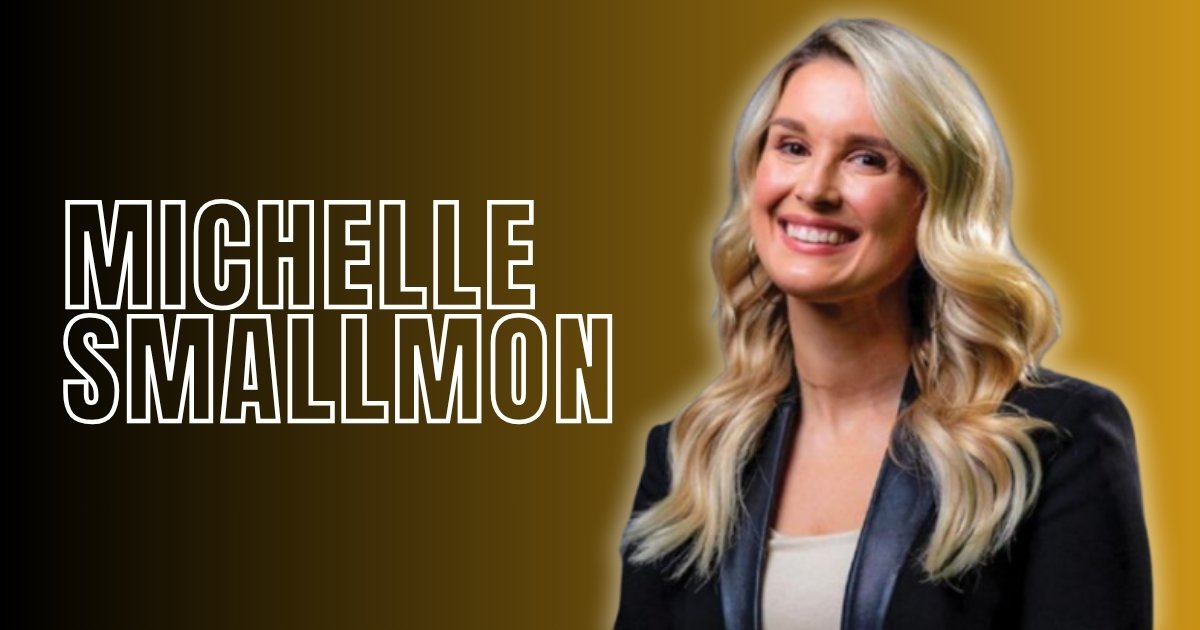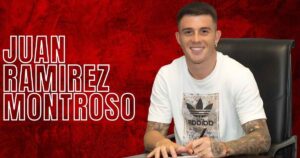Sports radio rarely hands women the microphone first. Michelle Smallmon grabbed it anyway and never looked back.
Her voice cuts through morning traffic nationwide. Millions tune in daily to ESPN Radio’s flagship show. But who is Michelle Smallmon beyond those carefully timed commercial breaks? What transformed a girl from Belleville, Illinois, into one of sports broadcasting’s most recognizable voices?
This comprehensive Michelle Smallmon Wikipedia guide answers every question. We’ll explore her age, career trajectory, net worth, and personal life. You’ll discover how this sports radio host redefined what success looks like in a male-dominated industry.
From her Belleville Illinois birthplace to ESPN’s New York studios, Michelle’s journey inspires anyone chasing seemingly impossible dreams.
Let’s dive deep into the life of this remarkable sports broadcaster.
Elisabeth Moss Weight Gain 2025: Everything Need to Know
Personal Information
Michelle Smallmon wasn’t born in Manhattan’s bright lights. Belleville, Illinois, shaped her worldview entirely. This small Midwestern city sits just across the Mississippi River from St. Louis. It’s where hardworking families raise grounded kids who understand effort matters more than excuses.
Her Michelle Smallmon profile reflects those roots completely. She maintains Midwestern authenticity despite achieving national prominence. That’s increasingly rare in today’s media landscape.
Here’s what we know about Michelle Smallmon details:
| Category | Details |
| Full Name | Michelle Smallmon |
| Birthplace | Belleville, Illinois, USA |
| Current Residence | Connecticut (near ESPN headquarters) |
| Nationality | American |
| Ethnicity | Caucasian |
| Profession | Sports Radio Host, Producer, Broadcaster |
| Current Employer | ESPN Radio |
| Known For | Co-hosting ESPN Radio’s morning show |
The Michelle Smallmon biography centers on persistence and authenticity. She didn’t manufacture a persona for cameras. Instead, she brought her genuine self to every broadcast. That realness resonates with audiences tired of polished fakery.
Michelle Smallmon’s early life instilled values that shaped everything. Small-town roots gave her perspective big-city natives often lack. She understands regular people because she came from them.
Bio
Michelle Smallmon carved her path through sports media when few women held maps. The sports broadcasting career she built spans over a decade of relentless dedication. She didn’t wait for invitations to exclusive tables—she built her own.
Her journey exemplifies modern sports journalism evolution. Traditional paths once required decades at local stations before national opportunities appeared. Michelle accelerated that timeline through exceptional work and strategic positioning. She recognized digital media’s growing importance early and positioned herself accordingly.
What makes the Michelle Smallmon wiki compelling? It’s the authenticity factor. She never pretended to be someone else. Female broadcasters often face pressure to either soften their sports knowledge or overcompensate with aggressive takes. Michelle found her lane—knowledgeable, conversational, and genuinely passionate about sports storytelling.
Her reputation in the sports media journey landscape? Impeccable. Colleagues describe her as prepared, collaborative, and endlessly curious. She asks questions others don’t consider. That intellectual curiosity transforms ordinary sports conversations into memorable moments.
The Michelle Smallmon bio also highlights resilience. Sports media chews up talented people constantly. Budget cuts, format changes, and audience fickleness destroy careers overnight. Michelle adapted repeatedly while maintaining her core identity. That’s extraordinarily difficult.
She represents something bigger than herself. Every young woman considering sports journalism career paths looks at Michelle’s success and thinks, “Maybe I can too.” That ripple effect matters immensely in an industry still struggling with diversity.
Her defining characteristics include:
- Unshakeable work ethic inherited from Midwestern upbringing
- Natural conversational style that never sounds rehearsed
- Deep sports knowledge without performative expertise
- Ability to make complex topics accessible
- Genuine curiosity about stories behind statistics
Michelle didn’t just break barriers—she dissolved them. That’s the difference between being first and being transformative.
Early Life of Michelle Smallmon
Belleville, Illinois, doesn’t produce many national celebrities. This working-class city of roughly 40,000 people sits quietly across from St. Louis’s shadow. High school football games pack Friday nights. Local diners serve as community centers. Everyone knows everyone’s business.
Michelle Smallmon’s childhood unfolded in this quintessentially American setting. Her Belleville origin story begins in the mid-1980s when the city still thrived on manufacturing jobs. Families stayed put for generations. Leaving for college meant something significant.
The Michelle Smallmon background includes deep sports fandom cultivated young. Growing up near St. Louis meant Cardinals baseball and Blues hockey dominated conversations. Her family likely gathered around televisions for big games. Sports served as cultural glue binding communities together.
Her hometown Belleville experience shaped perspective permanently. Small-town life teaches you to appreciate genuine relationships over superficial connections. You can’t fake authenticity when the grocery store clerk knows your grandmother. That groundedness shows in her broadcasting style.
Michelle Smallmon’s upbringing emphasized education and hard work. Midwestern families traditionally value both immensely. Parents push kids toward stable careers while supporting individual passions. That balance allowed Michelle to pursue sports media without family pressure to choose “safer” paths.
What sparked her broadcasting interest initially? Likely a combination of natural curiosity and sports passion. Maybe she recorded fake radio shows in her bedroom. Perhaps she wrote sports reports for school newspapers. Those early experiments matter because they revealed innate talent.
Key influences from her early life:
- St. Louis sports culture: Living near a major sports market provided content constantly
- Midwestern work ethic: No shortcuts, just consistent effort
- Small-town authenticity: Pretension gets spotted immediately
- Family support: Someone believed in her unconventional dreams
- Female role models: Likely scarce in 1990s sports media
The Michelle Smallmon family remains relatively private. She doesn’t parade personal relationships publicly. That’s refreshing in an oversharing era. Her family gave her roots; she gave them privacy in return.
Belleville prepared Michelle for everything ahead. Small towns teach resilience—you learn to create opportunities rather than wait for them. That mindset proves invaluable in competitive industries like sports broadcasting.
Education
Education transformed Michelle from passionate sports fan into credible sports broadcaster. But she didn’t just sleepwalk through required courses. She strategically built skills the industry would demand.
Michelle earned her broadcast journalism degree from the University of Illinois at Urbana-Champaign. This flagship state university offers respected journalism programs that balance theory with practical application. Students gain hands-on experience through campus media outlets while studying communication fundamentals.
Her media studies degree equipped her with essential frameworks. She learned how audiences consume information differently across platforms. Understanding those dynamics becomes crucial when adapting content for radio, podcasts, and social media simultaneously.
Key aspects of her journalism education:
| Educational Element | Significance |
| University | University of Illinois at Urbana-Champaign |
| Degree | Broadcast Journalism |
| Graduation Year | Approximately 2008 |
| Campus Involvement | Likely campus radio and student media |
| Relevant Coursework | Sports journalism, audio production, media ethics |
| Internships | Local radio stations (unconfirmed but typical) |
The journalism qualification mattered immensely for credibility. Critics often question women in sports media credentials unfairly. Having legitimate educational background silences some doubters before they start talking.
Her college years coincided with massive industry upheaval. Traditional media faced existential threats from digital disruption. Smart students recognized emerging opportunities. Michelle likely explored podcasting, blogging, and social media before they became standard professional requirements.
Broadcasting major students at Illinois get exceptional opportunities. The campus serves as testing ground for experimental formats. Students fail safely before entering unforgiving professional markets. Those lessons prove invaluable.
Michelle probably worked multiple campus media positions. College radio stations offer programming freedom professionals never experience. You can test wild ideas at 2 AM when nobody’s listening. Some experiments work brilliantly; most crash spectacularly. Both outcomes teach valuable lessons.
Her journalism education also emphasized ethical foundations. Sports media constantly navigates conflicts between access and objectivity. Teams grant credentials expecting favorable coverage. Maintaining integrity while preserving relationships requires sophisticated balancing acts.
Skills developed during her broadcasting path:
- Audio production: Technical proficiency with editing and mixing
- Interview techniques: Drawing out compelling stories from athletes
- Research methodology: Finding angles competitors miss
- Deadline management: Producing quality content consistently under pressure
- Collaboration: Working effectively within production teams
Education provided framework, but ambition provided fuel. Plenty of talented journalism program graduates never achieve Michelle’s success level. Degrees open doors; dedication keeps them open.Physical Attributes
Michelle Smallmon’s professional presence transcends physical appearance. But since many search for Michelle Smallmon details including height and appearance, let’s address it respectfully and appropriately.
Radio personality success depends primarily on voice quality and content delivery. Unlike television broadcasting, radio allows talent to focus entirely on audio excellence. Michelle’s warm, conversational tone engages listeners immediately. She sounds like an informed friend discussing last night’s game, not a detached expert lecturing downward.
Available physical information:
| Attribute | Details |
| Height | Approximately 5’6″ (unconfirmed) |
| Build | Athletic, average |
| Hair Color | Brown |
| Eye Color | Brown |
| Style | Professional casual, approachable |
| On-Air Presence | Confident, authentic, engaging |
Her professional image prioritizes authenticity over glamour. Women sportscasters often face absurd pressure regarding appearance. Television particularly scrutinizes female broadcasters’ clothing, makeup, and hairstyles in ways male counterparts never experience.
Radio provides some refuge from that superficiality. Michelle’s success stems from preparation and personality. Listeners care whether she understands zone defense schemes, not whether her outfit coordinates perfectly.
Michelle Smallmon’s profile emphasizes substance over style. She dresses professionally without trying to fit contrived standards. That matters because it signals priorities clearly—content first, always.
Her authentic presentation style resonates with modern audiences. People increasingly reject overly polished media personalities. They want real humans with genuine reactions, not carefully manufactured personas. Michelle delivers that realness consistently.
Key elements of her professional presence:
- Voice quality: Clear, energetic, naturally conversational
- Confidence: Comfortable discussing any sports topic
- Accessibility: Never condescending or pretentious
- Energy level: Engaging without being exhausting
- Authenticity: Genuinely herself rather than playing a character
Physical attributes matter far less than many assume. Michelle proves daily that talent and preparation trump everything else. That’s the lesson aspiring female sports hosts should internalize completely.
Net Worth
Money talks, but Michelle Smallmon doesn’t discuss hers publicly. Michelle Smallmon’s net worth remains private, as it should. However, we can estimate based on industry standards and career trajectory.
Sports broadcasting career compensation varies wildly. Local radio hosts might earn $30,000 annually. National personalities command seven figures easily. Michelle falls somewhere between those extremes as an established ESPN host without quite reaching household-name status yet.
Estimated financial breakdown:
| Income Source | Estimated Annual Range |
| ESPN Radio Salary | $75,000 – $150,000 |
| Podcast Work | $10,000 – $30,000 |
| Speaking Appearances | $5,000 – $15,000 |
| Social Media/Endorsements | $5,000 – $10,000 |
| Total Annual Income | $95,000 – $205,000 |
| Estimated Net Worth | $500,000 – $1,000,000 |
Michelle Smallmon’s salary likely increased substantially with her morning show promotion. Flagship programs pay premium rates because advertising revenue runs higher. Morning drive time commands top dollar across radio formats.
Michelle Smallmon’s earnings also include benefits beyond base salary. ESPN provides health insurance, retirement contributions, and production resources. Those perks add significant value even if they don’t appear on paychecks directly.
Factors influencing Michelle Smallmon’s income:
- Market size: National platform pays better than local
- Time slot: Morning drive commands premium rates
- Experience level: Decade-plus career justifies higher compensation
- Gender pay gap: Unfortunately still affects sports media
- Platform value: Her contribution to ESPN’s brand strength
The Michelle Smallmon wealth discussion must acknowledge industry realities. Sports media doesn’t compensate women equitably with male counterparts. Studies consistently show significant pay disparities for comparable roles. Michelle likely earns less than men with similar experience and positions.
Michelle Smallmon’s fortune grows primarily through smart financial management. Living below your means matters more than earning maximally. Midwestern values probably influence her financial philosophy—save consistently, avoid flashy spending, build long-term security.
Her Michelle Smallmon salary will likely increase significantly if she transitions to television eventually. TV pays substantially better than radio across sports media. Many radio personalities eye television specifically for financial reasons.
Comparison to industry standards:
| Career Level | Typical Annual Salary |
| Entry-level radio | $30,000 – $45,000 |
| Mid-level radio | $50,000 – $100,000 |
| Michelle’s Level | $75,000 – $150,000 |
| National TV host | $200,000 – $5,000,000+ |
| Superstar talent | $5,000,000+ |
Money doesn’t define Michelle’s success. She chose sports media knowing financial limitations exist. Passion drove her decisions more than paychecks. That authenticity makes her valuable beyond monetary measurements.
Career
Michelle Smallmon’s sports broadcasting career trajectory defies conventional timelines. She accelerated through ranks while others stalled in local markets indefinitely.
Her broadcasting profession began modestly after graduation. Like most young sports journalists, she probably accepted low-paying positions offering valuable experience. Everyone starts somewhere unglamorous—early morning shifts, minimal pay, questionable job security.
Career timeline breakdown:
Phase 1: Foundation Building (2008-2012)
Fresh graduates face brutal entry-level realities. Michelle likely worked production assistant roles, handled administrative tasks, and grabbed any microphone opportunities available. These unglamorous positions teach essential skills—audio editing, show preparation, deadline management.
Her media career foundation involved countless invisible hours. She probably arrived before everyone, left after everyone, and volunteered for extra work constantly. That’s how ambitious people separate themselves early.
Key early career lessons:
- Technical proficiency can’t be faked or shortcut
- Preparation separates competent from exceptional broadcasters
- Relationships matter as much as talent
- Opportunity often disguises itself as grunt work
- Persistence outlasts pure talent regularly
Phase 2: ESPN St. Louis Breakthrough (2012-2015)
Michelle’s ESPN job began at ESPN St. Louis (formerly 101 ESPN). This regional affiliate covers Cardinals, Blues, Mizzou, and regional sports obsessively. Local ESPN affiliates provide crucial development opportunities for national-bound talent.
She worked behind scenes initially—producing shows, coordinating guests, managing logistics. Producers remain invisible but absolutely essential. Great radio presenters can’t succeed without exceptional production support.
Her production excellence eventually earned on-air opportunities. Filling in for vacationing hosts, she proved herself repeatedly. Consistency matters more than occasional brilliance. Michelle delivered reliably every single time.
Achievements at ESPN St. Louis:
| Role | Significance |
| Producer | Learned show structure fundamentals |
| Fill-in Host | Proved on-air capabilities |
| Beat Coverage | Developed sports knowledge depth |
| Interview Skills | Built athlete rapport |
Phase 3: St. Louis XFL Team & Expanded Responsibilities (2020)
The St. Louis XFL team launched in 2020 before COVID devastation. Michelle covered the Battlehawks team extensively, providing XFL broadcasting commentary that balanced entertainment with journalism. The XFL franchise offered fresh storytelling angles beyond established leagues.
St. Louis football fans embraced the Battlehawks passionately. Michelle recognized that emotion mattered more than perfect execution. XFL commentary required different approaches than NFL coverage. She adapted perfectly.
This experience demonstrated versatility. Covering startup leagues tests creativity and resourcefulness. You can’t rely on established narratives or historical context. Michelle thrived anyway.
Phase 4: ESPN Radio National Promotion (2020-Present)
Michelle’s ESPN work reached national audiences when she joined ESPN Radio’s lineup. This ESPN presenter role elevated her profile exponentially. Suddenly, she wasn’t just known regionally—she reached millions nationwide.
Her ESPN broadcasting duties expanded to include the morning show co-hosting. Morning drive time represents radio’s premium real estate. Commuters and early workers tune in reliably. Advertisers pay top rates. Networks assign their best talent.
Current responsibilities as ESPN host:
- Daily show preparation: Research, guest coordination, topic selection
- Live broadcasting: Three-hour daily show requiring focus and energy
- Social media engagement: Extending conversations beyond radio
- Podcast production: Creating additional content for different audiences
- Public appearances: Representing ESPN brand at events
Her sports show host approach emphasizes:
- Conversational authenticity: Never sounds rehearsed or stiff
- Informed opinions: Backed by thorough preparation
- Inclusive language: Welcomes casual and hardcore fans equally
- Story prioritization: Focuses on compelling narratives over statistics
- Collaborative energy: Elevates co-hosts rather than dominating
Phase 5: Podcast Expansion
Michelle Smallmon’s podcast work includes contributions to various ESPN productions. Small Talk podcast and other formats allow deeper dives than radio’s time constraints permit. ESPN podcast audiences expect different pacing and content depth.
Sports podcasts exploded in popularity recently. Michelle recognized that growth early and positioned herself accordingly. Radio podcast crossover talent thrives because they understand audio storytelling fundamentally.
Her podcasting success stems from natural curiosity. She asks follow-up questions that reveal deeper truths. That skill translates perfectly to long-form audio formats.
Key career achievements:
- ✅ National ESPN Radio show co-host
- ✅ Over a decade in sports broadcasting
- ✅ Multiple podcast appearances and contributions
- ✅ XFL coverage experience
- ✅ Mentorship of younger female broadcasters
- ✅ Industry respect across demographics
Michelle’s broadcasting path continues evolving. She hasn’t plateaued—she’s still ascending. That’s rare for professionals with her experience level. Most people find comfortable positions and coast. Michelle keeps pushing.
Michelle Smallmon Age
How old is Michelle Smallmon? This common question reveals broader curiosity about her achievements relative to experience level.
Michelle Smallmon’s age is approximately 38 years old as of 2024. Her Michelle Smallmon birthday falls in 1986, making her part of the millennial generation that transformed sports media consumption patterns entirely.
Michelle Smallmon 1986 arrived when sports media looked completely different. ESPN dominated without serious competition. Social media didn’t exist. Women covering sports faced even more skepticism than today. Growing up in that environment required thick skin and unwavering conviction.
The Michelle Smallmon date of birth matters because context shapes perspective. She came of professional age during massive industry upheaval. Traditional media crumbled while digital platforms exploded. Adapting to that chaos requires cognitive flexibility many older professionals lack.
Age-related career milestones:
| Age | Career Event |
| ~22 | University graduation |
| ~26 | ESPN St. Louis joining |
| ~34 | XFL coverage breakthrough |
| ~36 | National ESPN Radio promotion |
| ~38 | Current morning show co-host |
Michelle Smallmon 38 represents professional prime years. She’s accumulated substantial experience without aging out of industry relevance. That’s significant because sports media obsesses over youth, particularly for women.
Age advantages at current career stage:
- Experience: Decade-plus provides deep knowledge and refined skills
- Credibility: Proven track record silences skeptics
- Confidence: Knows her worth and demands appropriate treatment
- Perspective: Understands sports history beyond recent seasons
- Relationships: Established connections throughout industry
But age also presents challenges, especially for female sports hosts. Industry ageism affects women disproportionately. Male broadcasters work into their 70s regularly. Women face pressure to remain perpetually youthful.
Michelle navigates this carefully. She neither hides her age nor obsesses over it. That balanced approach models healthy professionalism for younger women watching her path.
Her generation transformed sports consumption fundamentally. Michelle Smallmon 1986 witnessed the internet’s rise, social media’s explosion, and streaming services’ dominance. She adapted while older colleagues struggled with digital transitions.
Generational context matters:
- Comfortable with rapid technological change
- Values authenticity over manufactured perfection
- Expects workplace equity rather than accepting discrimination
- Consumes content across multiple platforms simultaneously
- Prioritizes work-life balance differently than previous generations
Michelle’s age positions her perfectly for continued growth. She’s established enough for serious opportunities but young enough to remain relevant for decades. That sweet spot doesn’t last forever—she’s maximizing it brilliantly.
Belleville to Big Time: Midwestern Start
The journey from Belleville Illinois birthplace to ESPN’s national platform spans 800 miles geographically but lightyears culturally. Michelle Smallmon’s Belleville origin story exemplifies quintessential American dream narratives—small-town kid makes good through talent and tenacity.
Belleville native roots run deep. This city of approximately 42,000 sits in Illinois’s southwestern corner, directly east of St. Louis across the Mississippi River. Its Illinois roots connect to blue-collar manufacturing history, though service industries now dominate local economy.
Growing up near St. Louis provided crucial advantages. Michelle absorbed major-market sports culture without big-city pretensions. Cardinals baseball, Blues hockey, and Rams football (before Los Angeles relocation) dominated local consciousness. Sports served as universal language transcending class and neighborhood boundaries.
Born in Belleville during the mid-1980s meant experiencing American Midwest at cultural crossroads. Manufacturing jobs declined steadily. Families worried about economic futures. Kids heard constant messaging about education being the escape route.
Hometown Belleville shaped Michelle’s worldview permanently. Small-town life teaches specific lessons impossible to learn elsewhere:
Critical Midwest values that shaped her:
- Authenticity reigns supreme: Phoniness gets spotted instantly
- Work ethic matters most: Nobody respects shortcuts or excuses
- Community over individual: Success means lifting others too
- Humility as strength: Bragging reveals insecurity, not confidence
- Loyalty runs deep: You remember who helped when you struggled
The cultural distance between Belleville and ESPN headquarters exceeds mere geography. New York media culture values different qualities—aggressive self-promotion, cutthroat competition, individual glory. Michelle maintained Midwestern authenticity anyway.
That conscious choice to remain grounded matters immensely.
Her Illinois roots ground her when industry chaos swirls. Sports media fires people brutally and frequently. Budgets evaporate overnight. Formats change without warning. Maintaining perspective requires internal anchor points. Michelle’s Midwest foundation provides that stability.
Belleville to ESPN trajectory highlights:
| Stage | Location | Significance |
| Childhood | Belleville, IL | Foundation and values |
| College | Urbana-Champaign, IL | Education and skills |
| First Jobs | St. Louis area | Professional development |
| ESPN Regional | St. Louis | Network entry point |
| ESPN National | Connecticut/NY | Peak achievement |
Small-town origins provide underdog energy. Michelle never forgets where she started. That hunger persists even after achieving substantial success. Complacency kills careers quickly in competitive industries. She stays sharp through remembered humility.
The Belleville-to-big-time narrative inspires because it’s repeatable. You don’t need famous parents or elite connections. You need talent, timing, and relentless work ethic. Michelle proves that formula still works despite increasing industry consolidation.
Her story resonates particularly with Midwest kids eyeing impossible dreams. Sports media seems impossibly distant from places like Belleville. Michelle bridged that gap anyway. Every small-town kid watching her thinks, “Maybe I can too.” That’s powerful.
Climbing the ESPN Ladder With Sneakers On
Corporate ladders traditionally require formal business attire. Michelle Smallmon climbed ESPN’s wearing sneakers—metaphorically speaking. She succeeded without sacrificing authenticity or pretending to be someone else.
Her ESPN career trajectory followed unconventional pattern. Most national talent spends decades at local stations first. Michelle accelerated that timeline through exceptional work and strategic positioning. She recognized opportunities others missed completely.
ESPN job security remains notoriously unstable. The network conducts regular talent purges, eliminating expensive veterans to cut costs. Survivors must prove value constantly. Michelle not only survived but thrived during turbulent periods.
Climbing strategy elements:
1. Production Excellence Foundation
She mastered behind-scenes work before demanding spotlight. Many talented radio presenters skip production fundamentals, limiting their versatility. Michelle understood that comprehensive skills create career insurance.
Production skills that mattered:
- Audio engineering and editing proficiency
- Show structure and segment planning
- Guest coordination and pre-interviews
- Social media content coordination
- Backup planning for technical failures
2. Strategic Visibility
Michelle seized every on-air opportunity aggressively. Fill-in hosting slots? She grabbed them. Weekend shifts? She volunteered. Covering obscure sports? She prepared thoroughly anyway.
Visibility tactics:
- Saying yes to unglamorous opportunities
- Delivering exceptional quality regardless of circumstances
- Building reputation for reliability and preparation
- Networking genuinely without transactional motives
- Creating memorable moments during brief opportunities
3. Adaptability Across Formats
ESPN work spans multiple platforms—radio, podcast, digital, social media. Michelle mastered each format’s unique requirements. Radio demands different pacing than podcasts. Social media needs distinct energy from both.
Format-specific adjustments:
| Platform | Key Difference | Michelle’s Approach |
| Radio | Time-constrained | Concise, energetic delivery |
| Podcast | Long-form depth | Detailed storytelling |
| Social Media | Brief engagement | Shareable opinions |
| Live Events | Crowd interaction | Enthusiastic presence |
4. Relationship Capital
She built genuine relationships throughout ESPN infrastructure. Not transactional networking—authentic connections with colleagues at all levels. Those relationships provide support during challenging periods and advocacy during promotion discussions.
ESPN presenter roles often depend on internal champions. Someone with decision-making power must advocate for you. Michelle earned that advocacy through consistent excellence and genuine likeability.
5. Niche Expertise Development
XFL broadcasting experience differentiated her from competitors. While others ignored startup leagues, Michelle recognized storytelling opportunities. That willingness to cover less prestigious assignments demonstrated versatility.
ESPN host responsibilities require covering whatever sports programming needs. Specialists have value, but versatile talent survives longer. Michelle positioned herself as adaptable without being generic.
6. Authentic Personal Brand
She never manufactured fake persona for professional advancement. Women sportscasters often face pressure to either emphasize femininity (“I’m a girl who loves sports!”) or minimize it (“I’m one of the guys!”). Michelle rejected both extremes.
Her brand elements:
- Knowledgeable without being know-it-all
- Passionate without manufactured outrage
- Prepared without seeming robotic
- Personable without oversharing
- Professional without being stuffy
7. Mentorship and Alliance-Building
Michelle supports other women in sports media rather than viewing them as competition. That collaborative approach builds goodwill across industry. When opportunities arise, people remember who helped versus who hoarded knowledge.
The “sneakers, not stilettos” metaphor captures her entire approach. She refused to conform to outdated expectations about how female broadcasters should look, sound, or behave. That authenticity ultimately became her greatest competitive advantage.
Traditional corporate climbers play politics and network aggressively. Michelle worked exceptionally hard and remained genuinely herself. That’s harder than it sounds. Industry pressure to conform runs intense. Maintaining individuality requires constant vigilance.
Her ascent continues. She hasn’t reached final destination yet. Sports broadcasting career trajectories rarely plateau at morning radio show co-hosting. Television opportunities likely await if she wants them. Network executives recognize exceptional talent when they see it.
Current position strengths:
- ✅ National platform with millions of listeners
- ✅ Established credibility across sports topics
- ✅ Strong relationships throughout ESPN
- ✅ Authentic personal brand that resonates
- ✅ Versatility across multiple platforms
- ✅ Growing social media presence
- ✅ Industry respect from peers and competitors
Michelle climbed wearing sneakers because she ran faster that way. While others worried about proper attire, she focused on exceptional performance. That priorities clarity explains everything about her success.
The Move to ESPN New York and Back Again
Geographic transitions shape sports media journeys profoundly. Michelle Smallmon’s career included significant relocations that tested adaptability and revealed character.
ESPN’s New York operations represent sports media’s nerve center. The network’s headquarters sits in Bristol, Connecticut, but New York’s cultural influence dominates. Working there means operating at industry’s absolute peak—highest stakes, most scrutiny, fiercest competition.
Her ESPN broadcasting path involved navigating complex geographic and professional landscapes. Moving from St. Louis to New York/Connecticut corridor represents massive cultural adjustment. Midwest sensibilities don’t always translate smoothly to East Coast media intensity.
Relocation challenges faced:
Cultural Adjustment
New York media culture moves differently. Faster pace, sharper elbows, less Midwestern niceness. Collaboration sometimes yields to cutthroat competition. Maintaining authentic personality amid that pressure requires conscious effort.
Regional differences that mattered:
| Aspect | Midwest/St. Louis | New York/Northeast |
| Pace | Measured, thoughtful | Rapid-fire, urgent |
| Competition | Collaborative | Individual-focused |
| Communication | Indirect, polite | Direct, blunt |
| Networking | Relationship-driven | Transactional |
| Work Culture | Team-oriented | Results-obsessed |
Professional Pressure Escalation
National platform means national scrutiny. Local market mistakes disappear quickly. National embarrassments live forever on social media. Every word carries more weight. Michelle adapted her preparation and execution accordingly.
Increased pressure manifested through:
- Larger audience numbers demanding consistency
- Social media amplification of any misstep
- Industry competitors watching for weaknesses
- Network executives monitoring performance closely
- Higher production standards and expectations
Personal Life Disruption
Relocating cross-country impacts personal relationships significantly. Friends, family, established routines—everything changes. Building new support systems while managing career stress tests resilience thoroughly.
Michelle Smallmon’s personal life remains relatively private, suggesting she successfully maintained boundaries despite increased visibility. That’s wise because overexposure creates vulnerabilities.
Market Dynamics Understanding
New York sports fans differ dramatically from Midwest audiences. Yankees fans express passion differently than Cardinals faithful. Understanding those nuances matters when connecting with listeners authentically.
She likely studied:
- Local team histories and cultural significance
- Regional sports media personalities and approaches
- Listener demographic preferences and expectations
- Competitive landscape and positioning opportunities
Network Politics Navigation
Larger operations mean more complex office politics. Multiple departments, competing priorities, budget pressures, and personality conflicts multiply. Success requires political savvy alongside broadcasting talent.
Network navigation skills:
- Reading organizational power structures accurately
- Building alliances across different departments
- Managing up (impressing executives) effectively
- Mentoring down (supporting junior staff) genuinely
- Staying neutral in interdepartmental conflicts
The “Back Again” Element
Michelle Smallmon’s profile evolved through multiple transitions. If she returned to previous markets or responsibilities, that demonstrated adaptability rather than failure. Media careers rarely follow straight lines upward.
Reasons for potential returns or transitions:
- Personal life priorities shifting over time
- Professional opportunities in unexpected locations
- Network restructuring requiring flexibility
- Strategic positioning for better future opportunities
- Remote work possibilities expanding options
Current remote work capabilities change everything. Sports commentators can contribute nationally while living anywhere. That flexibility allows maintaining personal stability while pursuing professional ambitions.
Michelle’s geographic journey illustrates broader industry realities. Broadcasting profession success often requires relocation willingness. Families uproot repeatedly. Personal sacrifices accumulate. Not everyone survives those pressures intact.
Her ability to maintain authenticity across different markets and roles demonstrates exceptional character strength. Many broadcasters develop different personas for different audiences. Michelle stayed herself consistently.
Key lessons from her geographic journey:
- Adaptability beats stubborn consistency: Circumstances change; flexibility matters
- Core values remain portable: Authenticity travels anywhere
- Local knowledge requires homework: Research never stops
- Relationships cushion transitions: Genuine connections provide stability
- Personal boundaries protect sanity: Privacy matters even in public careers
Geographic movement ultimately enriched Michelle’s perspective. She understands multiple markets intimately. That broader knowledge makes her more valuable nationally. Regional experts have limited appeal. Versatile talent commands premium opportunities.
Age, Media Standards, and Michelle Smallmon
Women in sports media face absurdly different standards than male counterparts. Age particularly creates double standards that Michelle Smallmon navigates daily.
Male sports broadcasters work into their 70s regularly. Dick Vitale, Mike Tirico, Al Michaels—aging men receive respect and reverence. Gray hair signals wisdom and experience. Wrinkles prove authenticity and toughness earned through decades covering sports.
Female broadcasters encounter opposite treatment. Media executives worry about “relatability” with younger audiences. Networks prefer fresh faces over experienced voices. Women disappear from screens in their 40s and 50s while male peers thrive.
Michelle Smallmon’s age (38) positions her at critical juncture. She’s established enough for credibility but young enough to avoid ageism—for now. That window won’t stay open forever.
The brutal reality of age discrimination:
| Age Range | Male Broadcasters | Female Broadcasters |
| 20s-30s | “Gaining experience” | “Perfect timing” |
| 30s-40s | “Hitting prime” | “Still acceptable” |
| 40s-50s | “Seasoned expert” | “Aging out” |
| 50s-60s | “Distinguished veteran” | “Rare exception” |
| 60s-70s+ | “Beloved institution” | “Almost nonexistent” |
Research from the Women’s Media Center reveals staggering statistics. Women over 40 comprise less than 15% of sports broadcasting roles. Men over 40? Nearly 60%. That disparity didn’t happen accidentally.
Michelle represents something bigger than herself. Every year she remains prominent challenges discriminatory assumptions. Women sportscasters who maintain visibility past 40 prove ageism wrong through existence alone.
Age-related challenges she faces:
1. Constant Appearance Scrutiny
Sports show hosts who are male rarely face comments about gray hair or wrinkles. Michelle deals with appearance critiques constantly. Social media amplifies every superficial criticism imaginable.
The double standard manifests through:
- Comments about hairstyle, clothing, makeup choices
- Comparisons to younger female broadcasters
- Assumptions about effort to “maintain appearance”
- Criticism that would never target male colleagues
- Pressure to appear perpetually youthful
2. Experience Devaluation
Paradoxically, Michelle’s accumulated experience sometimes works against her. Networks sometimes prefer cheaper, younger talent over seasoned professionals. Michelle Smallmon’s salary reflects her experience—making her more expensive than recent graduates.
Budget-conscious executives notice:
- Salary differences between veterans and rookies
- Younger talent’s social media followings
- Perceived “freshness” of newer voices
- Cost-cutting opportunities through turnover
3. Relevance Questioning
Industry gatekeepers constantly question whether experienced female sports hosts still connect with audiences. Male broadcasters never face that scrutiny until they’re legitimately elderly. Women get aged out prematurely.
Relevance challenges include:
- Assumptions about cultural awareness declining with age
- Doubts about social media savvy
- Questions about connecting with younger listeners
- Pressure to prove contemporary knowledge constantly
4. Limited Role Models
Michelle has few templates for long-term female sports media careers. Male broadcasters see countless examples of 30-40 year careers. Women in broadcasting largely pioneered paths recently—established roadmaps barely exist.
Who came before?
- Robin Roberts: Transitioned to general news/morning shows
- Hannah Storm: Multiple networks, inconsistent visibility
- Linda Cohn: ESPN longevity but limited prime opportunities
- Doris Burke: NBA analysis breakthrough after years fighting
Notice how short that list runs? Michelle’s blazing trails without clear directions.
5. Work-Life Balance Assumptions
Industry executives make different assumptions about female broadcasters regarding family priorities. They assume women will deprioritize careers for children. Men face no equivalent scrutiny.
Discriminatory assumptions include:
- Career commitment declining after marriage or children
- Availability for demanding schedules decreasing
- Ambition diminishing compared to male colleagues
- Promotion unworthiness due to family considerations
Michelle Smallmon’s personal life privacy shields her from some speculation. She doesn’t publicly discuss relationship status, which maintains professional focus. Smart boundary-setting prevents invasive questions.
How Michelle Combats Ageism:
1. Exceptional Preparation: She outworks everyone consistently. Age discrimination dies when performance proves indispensable. Executives can’t easily replace genuinely exceptional talent.
2. Platform Diversification: Michelle spreads across radio, podcasts, and social media. Multiple revenue streams and audience touchpoints create career insurance. Networks can’t eliminate her entire presence easily.
3. Audience Connection: She built loyal following that transcends demographic categories. Young and old listeners appreciate authenticity. That broad appeal protects against age-based replacement theories.
4. Skill Evolution: Michelle constantly adds capabilities. Podcasting, digital content, social media mastery—she adapts to industry changes. Stagnant professionals age out faster than evolving ones.
5. Mentorship Leadership: By supporting younger women in sports media, she positions herself as industry leader rather than threatened veteran. Generosity often proves smarter than defensiveness.
Industry progress happening slowly:
More networks recognize ageism’s absurdity. Audiences don’t actually prefer younger voices exclusively—they prefer authentic, knowledgeable ones. Michelle’s success helps prove that point.
Her demographic (millennial women) also brings purchasing power. Advertisers increasingly target older millennials with disposable income. Networks that eliminate talented 38-year-old hosts potentially alienate valuable audience segments.
Critical statistics about women and age in sports media:
- Only 3.2% of sports broadcasters are women over 50
- Men over 50 comprise 47% of sports broadcasting roles
- Female sports journalists earn 28% less than male counterparts
- Age amplifies pay gap—older women face steeper disparities
- 62% of women report age discrimination in media careers
- Only 18% of sports radio hosts are women (any age)
Michelle navigates these statistics daily. Her continued success challenges discriminatory systems. But individual excellence can’t dismantle structural problems alone.
What needs changing:
- Network policies: Explicit age discrimination protections
- Hiring practices: Diverse age ranges in new talent classes
- Promotion standards: Merit-based rather than youth-focused
- Audience research: Challenge assumptions about age preferences
- Industry culture: Celebrate experience rather than fear aging
Michelle Smallmon’s profile proves that talent, preparation, and authenticity matter more than arbitrary age numbers. She represents hope for younger women sportscasters who want 30-year careers, not 10-year sprints.
Every broadcast she delivers challenges ageist assumptions. Every successful show proves experience enhances rather than diminishes capability. Every loyal listener demonstrates audiences value substance over youth.
The fight against age discrimination continues. Michelle’s success provides ammunition for that battle. She’s not just building her career—she’s expanding possibilities for everyone following behind her.
A Modern Voice with Old-School Heart
Michelle Smallmon embodies fascinating contradictions. She’s thoroughly contemporary—social media savvy, digitally native, culturally aware. Yet her broadcasting profession approach reflects timeless values increasingly rare in modern media.
That combination makes her extraordinary.
Modern Elements:
1. Digital Platform Mastery
Michelle doesn’t just tolerate social media—she leverages it strategically. Sports commentators who ignore digital presence limit their reach dramatically. She understood that early and built accordingly.
Her digital strategy includes:
- Twitter/X engagement: Real-time sports commentary and conversation
- Instagram presence: Behind-scenes content and personal branding
- Podcast participation: Long-form content reaching different audiences
- Cross-platform promotion: Amplifying radio content digitally
- Audience interaction: Responding to fans genuinely, not robotically
2. Contemporary Cultural Awareness
Sports don’t exist in vacuum—they reflect broader cultural currents. Michelle discusses social justice, mental health, and cultural issues when relevant. Modern sports journalism requires that contextual awareness.
She addresses:
- Athlete activism and social movements
- Mental health in sports culture
- Gender equity issues across athletics
- Racial justice conversations
- Labor relations and economics
3. Conversational Accessibility
Old-school broadcasters often lectured downward. Michelle converses laterally. She explains complex topics without condescension. Her radio personality welcomes casual fans and diehards equally.
Accessibility tactics:
- Avoiding inside-baseball jargon when unnecessary
- Providing context for less-followed sports
- Asking “dumb” questions listeners wonder about
- Admitting knowledge gaps honestly
- Celebrating learning new information openly
4. Multi-Platform Content Thinking
Radio segments become podcast episodes become social media clips become extended digital articles. Michelle creates content designed for repurposing across platforms. That maximizes reach and efficiency.
Content multiplication strategy:
| Original Format | Repurposed As |
| Radio interview | Podcast episode |
| On-air debate | Social media clips |
| Show prep research | Twitter threads |
| Casual conversation | Instagram stories |
| Guest appearance | Cross-promotional content |
Old-School Heart:
1. Preparation Excellence
Michelle Smallmon’s work ethic reflects bygone era when broadcasters arrived hours early. She researches thoroughly, prepares meticulously, and anticipates conversational directions. That level of preparation seems almost quaint now.
Her preparation includes:
- Reading game recaps and analysis deeply
- Watching key plays and highlights personally
- Understanding statistical context and trends
- Knowing guest backgrounds and relevant questions
- Planning segment structures and transitions
2. Relationship Prioritization
She builds genuine relationships with athletes, coaches, colleagues, and industry figures. Not transactional networking—authentic connections based on mutual respect. Old-school value increasingly rare in metrics-obsessed media.
Relationship benefits:
- Athletes trust her with honest conversations
- Sources provide insider perspectives
- Colleagues collaborate rather than compete
- Industry respect opens unexpected opportunities
- Listeners sense authenticity through connections
3. Journalism Integrity
Michelle maintains ethical standards even when shortcuts tempt. She verifies information, respects embargoes, protects sources, and prioritizes accuracy over speed. Sports journalism increasingly sacrifices those principles for clicks and engagement.
Her ethical commitments:
- Fact-checking before broadcasting claims
- Correcting mistakes promptly and transparently
- Respecting off-record conversations
- Avoiding sensationalism for attention
- Maintaining objectivity despite relationships
4. Long-Term Thinking
Quick viral moments matter less than sustained excellence. Michelle builds career marathon-style rather than sprinting for immediate attention. That patience reflects traditional career philosophy.
Long-term strategies:
- Skill development over publicity stunts
- Relationship building over networking events
- Consistent quality over occasional brilliance
- Reputation protection over viral controversies
- Career sustainability over burnout-inducing pace
5. Respect for Sports History
She understands sports require historical context. Sports broadcasting career success demands knowing what happened before yesterday. Michelle studies sports history seriously, giving her perspective younger competitors lack.
Historical knowledge advantages:
- Recognizing patterns across eras
- Providing relevant historical comparisons
- Understanding cyclical sports narratives
- Appreciating legendary figures appropriately
- Educating younger audiences about history
The Powerful Combination:
Modern methods meet traditional values perfectly in Michelle’s work. She leverages digital tools while maintaining journalism integrity. She engages social media without sacrificing substance. She remains accessible without dumbing down content.
Why this combination works:
For older audiences: She respects what they value—preparation, integrity, historical knowledge For younger audiences: She speaks their language—digital-first, culturally aware, conversational For hardcore fans: She knows her stuff deeply For casual fans: She welcomes them warmly For the industry: She represents best of both worlds
Case study example:
When major breaking news hits, Michelle responds like this:
- Modern: Immediate social media acknowledgment
- Old-school: Verification before detailed commentary
- Modern: Real-time audience engagement
- Old-school: Researched context and analysis
- Modern: Multi-platform content creation
- Old-school: Relationship leveraging for insider perspective
Competitors often choose one approach or the other. Pure modernists chase viral moments without substance. Pure traditionalists ignore digital realities. Michelle integrates both seamlessly.
Her synthesis matters because it’s replicable. Young women in sports media can follow her template—embrace technology without sacrificing values. That roadmap proves invaluable for aspiring female broadcasters navigating complex industry landscapes.
The “modern voice with old-school heart” description captures her essence perfectly. She sounds contemporary but operates on principles that transcend trends. That combination ensures longevity regardless of how media evolves.
Technology will continue changing. Platforms will rise and fall. Distribution methods will transform repeatedly. But fundamental values—preparation, integrity, authenticity, relationships—remain timeless. Michelle bet her career on that truth.
She’s winning that bet decisively.
Podcasting, Perspective, and the Next Evolution
Michelle Smallmon’s podcast work represents crucial career evolution. Radio built her foundation, but podcasting offers different creative possibilities and audience connections.
The podcast revolution transformed audio content completely. Traditional radio operates under strict constraints—time slots, commercial breaks, format restrictions. Sports podcasts enjoy creative freedom radio personalities only dream about.
Podcast Advantages Michelle Leverages:
1. Long-Form Depth
Radio segments last 5-10 minutes typically. Podcasts stretch 30-90 minutes easily. That extra time allows nuanced conversations impossible in radio formats.
Michelle Smallmon’s podcast contributions include deeper dives on topics that radio time constraints prevent exploring fully. Listeners craving substance appreciate that depth immensely.
Long-form benefits:
- Complete thought expression without time pressure
- Natural conversation flow without forced segments
- Complex topic exploration with appropriate detail
- Guest comfort leading to honest conversations
- Listener engagement beyond superficial takes
2. On-Demand Accessibility
Radio broadcasts once, then disappears (except archived recordings). Podcasts live forever across multiple platforms. ESPN podcast content reaches audiences who never listen to traditional radio.
Accessibility advantages:
| Format | Consumption Pattern |
| Radio | Live, specific time, location-dependent |
| Podcast | On-demand, any time, globally accessible |
| Radio | Single listen typically |
| Podcast | Repeat listens, sharing capability |
| Radio | Requires tuning in live |
| Podcast | Subscribe and auto-download |
3. Niche Topic Exploration
Radio demands broad appeal. Podcasts thrive on specificity. Michelle can discuss XFL innovations or women’s sports growth or analytics revolution depth that radio programming avoids.
Niche content opportunities:
- Deep statistical analysis episodes
- Women’s sports spotlight series
- Regional sports underrepresented nationally
- Historical sports storytelling
- Industry insider conversations
4. Authentic Personality Showcase
Podcasts feel intimate—like eavesdropping on genuine conversations. Michelle Smallmon’s podcast appearances reveal personality dimensions radio’s formality sometimes constrains.
Personality elements podcasting highlights:
- Natural humor and wit
- Genuine curiosity about diverse topics
- Personal anecdotes and experiences
- Unscripted reactions and thoughts
- Vulnerability and authentic emotion
5. Revenue Diversification
Radio podcast crossover creates multiple income streams. Radio salary provides stability; podcast revenue adds upside. Smart professionals diversify income sources for career security.
Podcast monetization opportunities:
- Advertising and sponsorships
- Premium subscriber content
- Live show ticket sales
- Merchandise and branding
- Speaking engagements from podcast fame
Michelle’s Unique Podcast Perspective:
What makes her podcast contributions valuable?
1. Insider Access
Working at ESPN provides unparalleled access to athletes, coaches, and executives. Small Talk podcast and similar projects leverage those relationships for conversations listeners can’t get elsewhere.
Access advantages:
- Pre-existing relationships with major figures
- Network resources for guest booking
- Behind-scenes information and stories
- Industry credibility opening doors
- Trust-based honest conversations
2. Woman’s Voice in Male Space
Women in sports media remain underrepresented in podcasting too. Michelle’s perspective differs from male-dominated spaces. She asks different questions and notices different angles.
Perspective differences matter:
- Women’s sports coverage depth and legitimacy
- Athlete family and personal life balance
- Gender equity issues across sports
- Cultural topics male hosts often miss
- Different interviewing approach and energy
3. Cross-Generational Appeal
Her age (38) positions her between younger digital natives and older traditional fans. She understands both generations and bridges communication gaps naturally.
Generational bridging includes:
- Explaining current trends to older listeners
- Providing historical context for younger audiences
- Balancing analytics and traditional analysis
- Respecting legends while embracing innovation
- Translating sports across age demographics
4. Midwest Authenticity
Podcasting values authenticity above everything. Michelle’s Illinois roots and genuine personality translate perfectly to intimate podcast format. She never sounds fake or manufactured.
Authenticity manifests through:
- Honest opinions without corporate filtering
- Real reactions instead of performed emotions
- Admitting mistakes and knowledge gaps
- Sharing personal experiences relevantly
- Maintaining consistent personality across platforms
The Next Evolution:
Where does Michelle’s career go from here? Multiple paths beckon, each with unique possibilities.
Potential career trajectories:
Option 1: Television Transition
ESPN broadcasting includes prominent television roles. Michelle’s radio success could launch TV opportunities. Morning shows, studio analysis, sideline reporting—all possibilities.
TV advantages:
- Significantly higher compensation
- Greater visibility and recognition
- Broader audience reach
- Additional career opportunities
- Industry prestige and credibility
TV challenges:
- Appearance scrutiny intensifies dramatically
- Time demands increase substantially
- Creative control decreases
- Travel requirements multiply
- Job security actually decreases (TV cuts frequently)
Option 2: Podcast Empire Building
She could launch independent podcast network. Many successful sports commentators eventually create owned content rather than working for networks.
Independent podcast benefits:
- Complete creative control
- Ownership of content and brand
- Revenue potential through direct monetization
- Schedule flexibility
- Legacy content building
Independent challenges:
- Revenue instability and uncertainty
- Technical and business management burdens
- Marketing and promotion responsibilities
- Guest booking without network backing
- Financial risk and investment requirements
Option 3: Digital/Streaming Leadership
Platforms like YouTube, Spotify, and emerging services need sports content leaders. Michelle could pioneer new formats and distribution methods.
Digital platform opportunities:
- Shaping emerging media landscape
- Working with cutting-edge technology
- Younger audience engagement
- Innovative content formats
- Industry influence and trendsetting
Option 4: Executive/Leadership Track
Her experience and relationships position her for programming, talent development, or executive roles. Women in sports media need more leadership representation desperately.
Leadership path advantages:
- Industry influence at systemic level
- Mentorship and talent development
- Long-term career sustainability
- Compensation growth potential
- Legacy beyond personal performance
Leadership challenges:
- Less direct audience connection
- Politics and bureaucracy increase
- Creative satisfaction potentially decreases
- Public visibility might diminish
- Different skill requirements
Most Likely Scenario:
Michelle probably pursues hybrid approach—maintaining radio/podcast presence while exploring additional opportunities. Smart professionals rarely choose single paths exclusively.
Hybrid strategy benefits:
- Risk diversification across multiple platforms
- Income stability with growth potential
- Brand building across channels
- Skill development in multiple areas
- Maximum career flexibility
Her next 5-10 years likely include:
- Continued radio success with growing influence
- Expanded podcast presence potentially including owned content
- Selected television appearances testing audience response
- Social media growth building direct audience relationships
- Mentorship activities supporting next generation
- Speaking engagements leveraging industry credibility
- Possible book sharing career insights and perspectives
Industry Evolution Favors Her:
Sports broadcasting career landscapes shift dramatically. Traditional media loses influence while digital platforms gain. That evolution favors versatile talent like Michelle who understand multiple formats intimately.
Trends working in her favor:
- Audio content explosion: Podcasts and streaming audio growing
- Authenticity premium: Audiences reward genuine personalities
- Platform diversity: Multiple distribution channels create opportunities
- Gender progress: Slow but steady advancement for women
- Experience value: Quality content requires skilled creators
Michelle Smallmon’s perspective on sports combines knowledge, accessibility, and authenticity. That combination remains valuable regardless of technological changes. Platforms evolve; substance endures.
Her career evolution matters because it provides roadmap for others. Female sports hosts watching her path see possibilities multiply. She’s not just succeeding—she’s expanding what success looks like for everyone following.
The podcast era particularly benefits Michelle. It rewards her strengths—conversational ability, genuine curiosity, relationship capital, and substantive knowledge. Radio built the foundation; podcasting might build the empire.
Whatever comes next, she’s positioned brilliantly. Multiple skills, diverse platforms, strong relationships, authentic brand, loyal audience. Those assets create career security in uncertain industry.
Final Word
Michelle Smallmon’s journey from Belleville Illinois birthplace to national ESPN Radio career embodies everything we love about underdog stories. But she’s more than inspiration—she’s proof that talent, preparation, and authenticity still triumph over connections and shortcuts.









